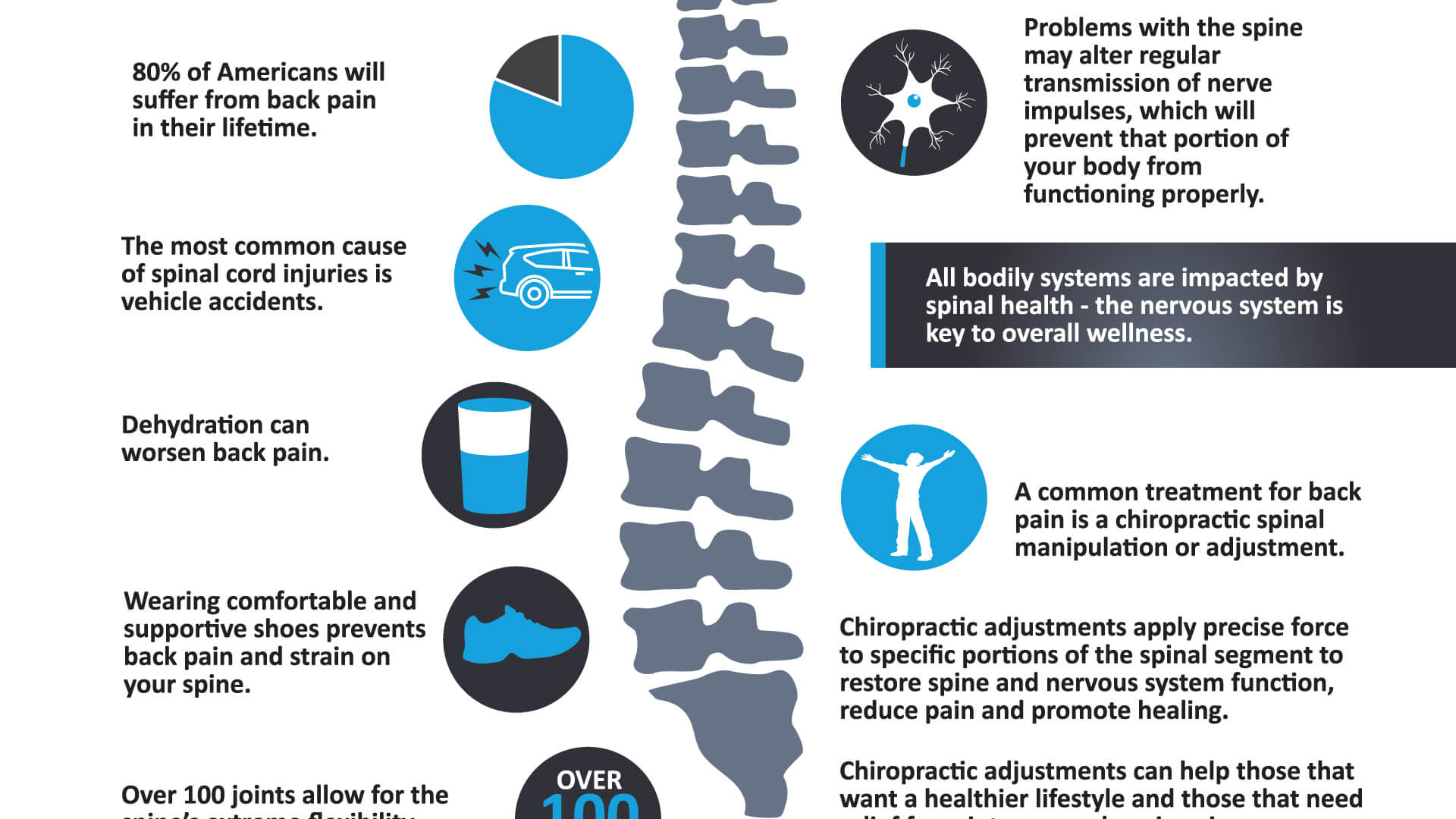The Impact Of Posture On Neck And Back Pain: Guidelines For Keeping Great Positioning Throughout Your Everyday Routine
The Impact Of Posture On Neck And Back Pain: Guidelines For Keeping Great Positioning Throughout Your Everyday Routine
Blog Article
Material Author-Bush Fox
Maintaining appropriate position isn't almost sitting up right; it has to do with straightening your body in a way that supports your spinal column and lowers the risk of neck and back pain. The way you sit, stand, and move throughout the day can substantially impact your spinal health and wellness. Yet just how specifically can you guarantee excellent positioning constantly, also during busy days full of various activities? Let's dive deeper into the refined yet impactful adjustments you can make to your daily regimen to keep your back delighted and healthy.
Value of Proper Posture
Appropriate position is critical in keeping a healthy back and avoiding discomfort. When you sit or stand with excellent stance, your back is in placement, decreasing pressure on your muscle mass, tendons, and joints. This positioning enables the body to disperse weight evenly, preventing excessive tension on certain areas that can lead to pain and discomfort. By keeping your spine effectively aligned, you can likewise improve your breathing and food digestion, as slouching can compress body organs and restrict their capability.
Additionally, maintaining excellent stance can boost your total appearance and self-esteem. When you stand tall with your shoulders back and head held high, you exude confidence and show up even more friendly. Good posture can also make you feel more invigorated and sharp, as it advertises correct blood flow and allows your muscular tissues to work successfully.
Integrating appropriate pose into your everyday regimen, whether sitting at a desk, walking, or working out, is crucial for avoiding neck and back pain and advertising general health. Remember, a small modification in just how you hold yourself can make a considerable difference in how you really feel and function throughout the day.
Common Postural Mistakes
When it concerns keeping great pose, several individuals unknowingly make usual blunders that can contribute to neck and back pain and pain. Among one of the most widespread errors is slouching or stooping over while resting or standing. This setting puts too much stress on the back and can cause muscular tissue discrepancies and discomfort in the long run.
One more common blunder is overarching the lower back, which can squash the natural curve of the spine and cause discomfort. Furthermore, crossing legs while resting may really feel comfortable, but it can produce a discrepancy in the hips and hips, causing postural concerns.
Using a pillow that's too soft or also firm while resting can likewise affect your positioning and add to back pain. Finally, frequently craning your neck to check out displays or adjusting your placement often can strain the neck and shoulders. Bearing in how long are chiropractic sessions can help you preserve far better placement and lower the risk of pain in the back.
Tips for Correcting Alignment
To boost your placement and reduce neck and back pain, it's vital to focus on making small modifications throughout your everyday routine. Beginning by bearing in mind your pose. When sitting, ensure your feet are level on the floor, your back is straight, and your shoulders are relaxed. Prevent slouching or leaning to one side. Usage ergonomic chairs or pillows to support your lower back.
When standing, distribute your weight equally on both feet, keep your knees slightly curved, and tuck in your hips. Involve your core muscle mass to sustain your spine. Take https://relief-chiropractic-clini84062.snack-blog.com/31137938/demystifying-chiropractic-care-adjustments-a-beginner-s-comprehensive-guide to stretch and walk around if you have an inactive task. Include exercises that strengthen your core and back muscular tissues, such as slabs or bridges.
While sleeping, utilize a pillow that supports the all-natural curve of your neck to maintain proper spine positioning. Prevent sleeping on your stomach, as it can strain your neck and back. By being mindful of these suggestions and making small modifications, you can gradually correct your alignment and reduce pain in the back.
Conclusion
Keep in mind, maintaining excellent posture is key to preventing pain in the back and advertising back health and wellness. By bearing in mind your positioning, distributing weight equally, and engaging your core muscular tissues, you can lower strain on your back and lessen the risk of discomfort and injury. Include ergonomic assistance, take routine breaks to stretch, and reinforce your core and back muscles to keep appropriate placement throughout the day. Your back will certainly thank you for it!
